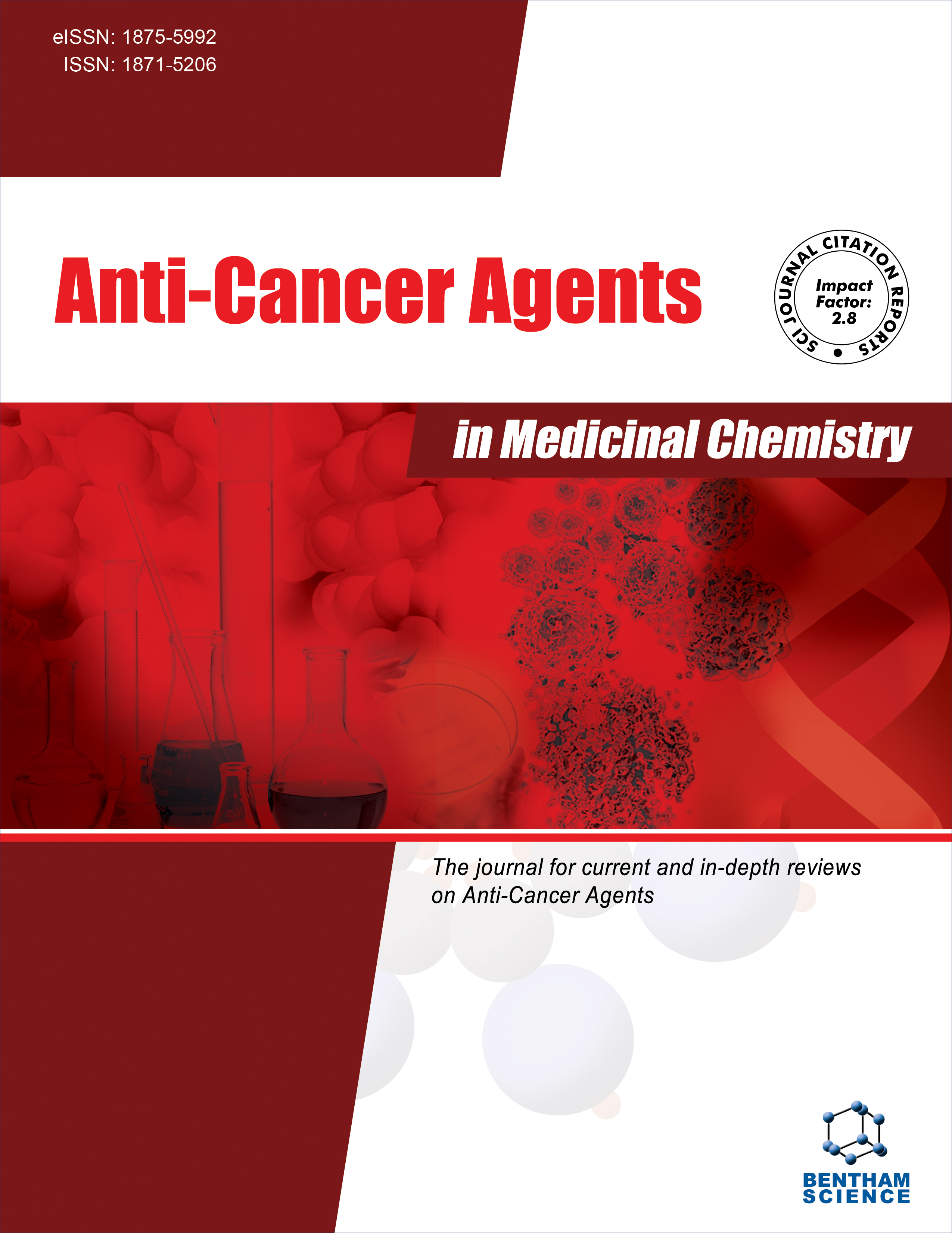-
oa Editorial [Hot topic:Metal-Containing Drugs and Novel Coordination Complexes in Therapeutic Anticancer Applications - Part I (Guest Editor: Irena Kostova)]
- Source: Anti-Cancer Agents in Medicinal Chemistry (Formerly Current Medicinal Chemistry - Anti-Cancer Agents), Volume 10, Issue 4, May 2010, p. 270 - 271
-
- 01 May 2010
- Previous Article
- Table of Contents
- Next Article
Abstract
I have been pleased to collect together, at the invitation of the Editor-in-Chief of the Anti-Cancer Agents in Medicinal Chemistry, Professor Michelle Prudhomme, a number of papers from researchers with whose work I am familiar, and in some cases participated in, to contribute to this Special Issue of the Journal. The aims and scope of the special issue of Anti-Cancer Agents in Medicinal Chemistry, entitled “Metal-Containing Drugs and Novel Coordination Complexes in Therapeutic Anticancer Applications” were to present up-to-date information on various aspects of metalcontaining or coordination compounds as anticancer therapeutics and to provide the reader with current design rules and delivery strategies. Our hopes are that this area of research would attract some of the most innovative researchers in the field of medicinal chemistry. The application of inorganic chemistry to medicine is a rapidly developing field, and novel therapeutic and diagnostic metals and metal complexes are now having an impact on medical practice. Much attention has focused on designing new coordination compounds with improved pharmacological properties and a broader range of activity. As evident from this special issue and the rapid progress in this area, one cannot resist an expectation that the anticancer metal-based agents progressively find their way into therapeutic and clinical practice. It is further hoped that the current issue will provide a valuable tool and reference for clinical and laboratory research into this fascinating area of cancer research. In this special issue, the experimented researchers specialized on different aspects related to drug development investigations review the most recent advancements on the topic. The current progress for the development of novel effective metal-containing anticancer drugs has been comprehensively discussed and reviewed. The first paper “Status of bi- and multi-nuclear platinum anticancer drug development”, authored by Jinchao Zhang et al. of Hebei University, Baoding, China, describes the structural types and structure-activity rules of non-classical bi- and multi-nuclear platinum anticancer drugs, and discusses their future potential as anticancer agents. These complexes represent a completely new paradigm for platinum based anticancer candidates, and appear to offer great potential as new anticancer agents. In the second paper, entitled “Latest Insights into the anticancer activity of Gold(III)-Dithiocarbamato complexes”, Dolores Fregona, Q. Ping Dou et al., of the University of Padova, Italy and Wayne State University, Detroit, USA, provide a detailed overview on their research work devoted to the design of gold-based anticancer agents, in particular, some gold(III)-dithiocarbamato derivates showing outstanding in vitro and in vivo antitumor properties and reducing, or even no, systemic and renal toxicity, compared to the reference clinically-established anticancer drug cisplatin. The authors comprehensively summarize the results achieved by the group, thoroughly focusing on the latest indepth mechanistic studies that have recently provided insights into their mechanism of action, thus opening up new prospects for further pharmacological testing and entering clinical trials. The third paper of the issue “A better platinum anticancer compound yet to come?”, by Ulrike Olszewski and Gerhard Hamilton of the Ludwig Boltzmann Cluster of Translational Oncology of Vienna, Austria, focuses on the development of the newest generation of platinumbased drugs, such as satraplatin, picoplatin and the multinuclear platinum complex BBR3464 (triplatin), enumerating the encouraging preclinical in vitro and in vivo results. Authors suggest that limited drug design and in vitro and in vivo scantly predictive preclinical tests led to select drug candidates of limited clinical activity. In addition, among the mechanisms of chemoresistance of platinum drugs in vivo, the authors indicate the insufficient diffusion in tumor tissues as an important limiting step in treatment of solid tumors with platinum compounds. They also underscore the need of more representative tumor models, such as resistant primary cancer cell lines, spheroids and orthotopic xenograft models, as the basis for more powerful predictive preclinical assays with Pt-compounds, as well as of new pharmaceutical formulations and bifunctional complexes thus able to achieve clinical activity even in multidrug-resistant tumors. Next, the authors contribute a paper entitled “Mechanisms of cytotoxicity of anticancer Titanocenes“. In this paper Ulrike Olszewski and Gerhard Hamilton describe the historical development and the current status of titanium based cytostatic drugs as anticancer agents. Using information from the literature and their own investigations with titanocene C including genome-wide gene expression in tumor cell lines in vitro a model of the cellular effects of this drug is developed. This review article puts forth a comprehensive analysis of the preclinical and clinical development of titanium-based coordination complexes in the treatment of cancer. Special emphasis is placed on chronicling the molecular targets of titanocenes to gain further insight into their mechanisms of action....


